
San Diego Cat Fight
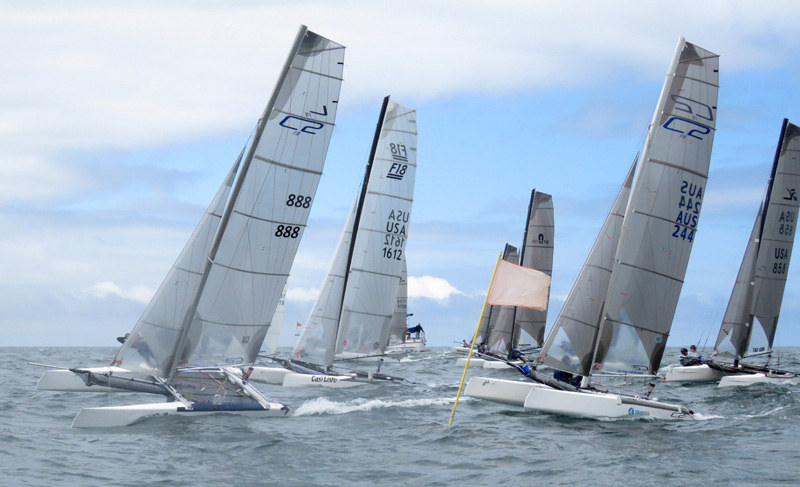
Catamaran fleets are exploding in San Diego. On May 14 and 15, Mission Bay Yacht Club hosted Cat Fight 2, the largest gathering of high-performance catamarans on the West Coast since the F18 World Championship in 2012.
Twenty-seven boats showed up for the fun. Competing in six races over two days, the spinnaker fleet had 19 boats on the start line, while A-cats had eight.
Saturday’s light and bumpy seas provided frustrating conditions for the fleet. But Sunday was the fun-day, as Mother Nature gave the cat sailors a perfect 12 to15 knots of breeze, with a few 20-knot gusts thrown in just for fun. It’s not a cat race unless there’s a capsize.
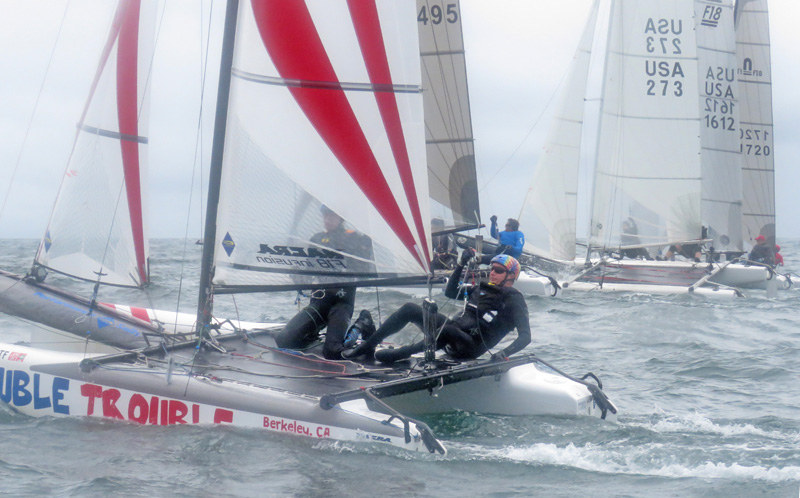
The current F18 National Masters Champion Scott Miller enjoyed surfing the waves downwind in the good breeze. The low points of his day were hitting the windward mark, not once, but twice. On Race 2, Miller was distracted by a capsized outrigger canoe on the course, when he realized his fleet was in their starting sequence. He launched his kite and accelerated toward the line, pulling off a decent start, then navigated through 18 other cats with his chute up. Miller and his wife Patty’s skills overcame those few mistakes, and Team Miller took third place overall in the Regatta.
Skipper Travis Vetter and crew Jason Jarrell had their own kitemare. They caught a fishing line between their daggerboards, and when they launched their spinnaker it created a rat’s nest. Somehow they managed to stay upright, and crew Jarrell drove the boat and trimmed the chute while helmsman Vetter untangled the mess. Miraculously, they kept pace with the fleet and didn’t give up much time.
This year’s Regatta was filled with both intense racing and personal triumph. Matt Morris, the 23-year-old comeback kid, was the crew on the winning boat from last year’s Cat Fight. After the racing in 2015, Morris suffered a seizure and later had to have brain surgery. It’s been a difficult year for Morris fighting his way back to health and vitality, but the doctors finally gave Morris the thumbs-up to compete again. This weekend’s Cat Fight was Morris’ first time back on the water racing. "Matt is the gas pedal on the boat," said helmsman Brian Paine. Like true champions, Morris and his skippers Steve Stroebel and Brian Paine defended their title as overall 2016 Cat Fight 2 Champions. It was absolutely the "feel good moment" of the Regatta.
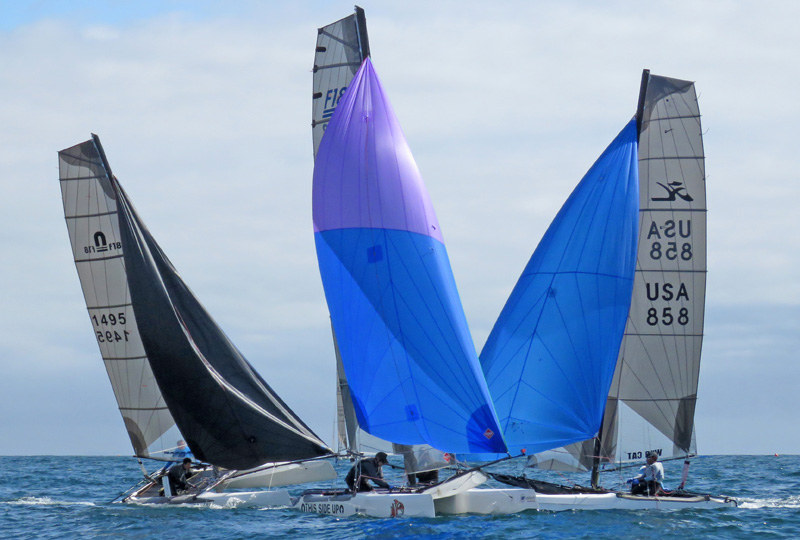
Mystery Spot
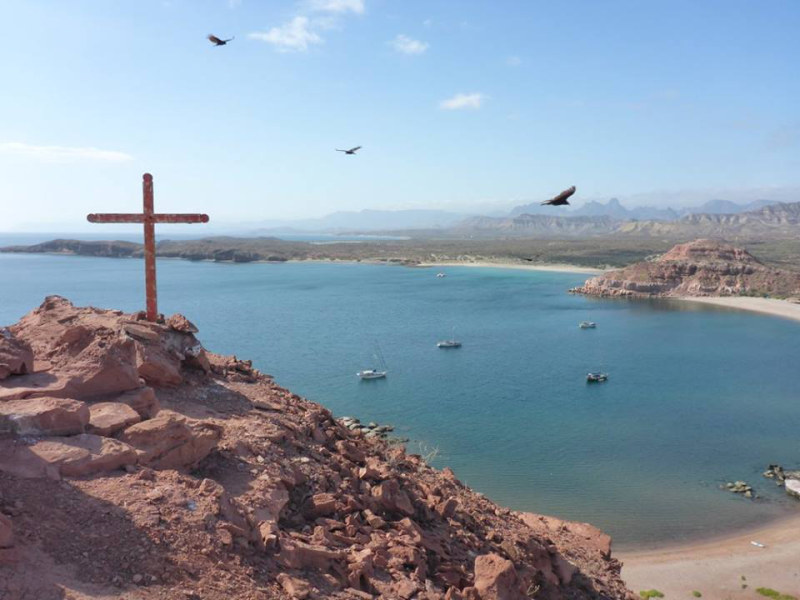
May is a great time to cruise the Sea of Cortez. The Northers are long gone and the weather is pleasant. In Loreto, for example, the air temp averages 82 during the day and a pleasant 55 at night.
The only bummer is that the water temps are surprisingly cold: Only 65° in May. In June it’s 70°, and in July it’s 75°, while in September, October and November it’s 85°. Water visibility in May is 30-50 feet. By June it’s 50-120 feet.
Despite the great weather, Robert and Nancy Novak of the San Francisco-based Oyster 485 Shindig have put their boat away for the season. Before they left, they took this photo. Can you identify the location?
Peyron Ends Historic Voyage
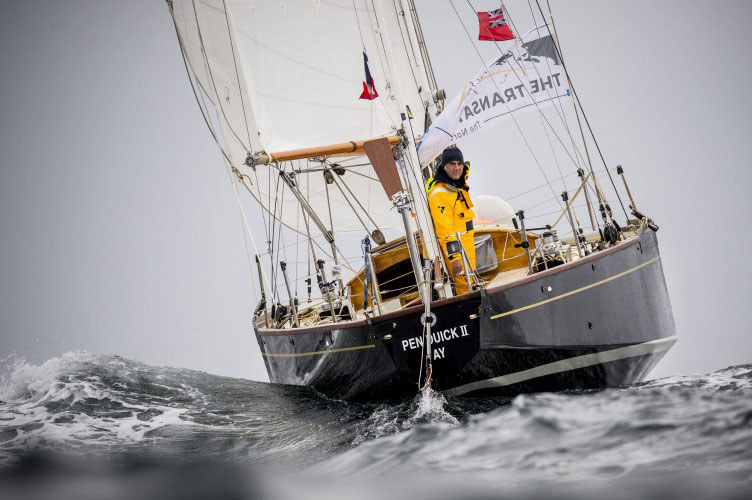
Loick Peyron’s nostalgic voyage from Plymouth to New York ended yesterday following damage to the historic ketch, Pen Duick II. The staysail is no longer usable. Peyron reported, “Unfortunately I cannot continue into the wind, so for the moment I am proceeding to Quiberon.” For the past 50 years, Pen Duick II has been owned by a sailing school, Quiberon l’Ecole Nationale de Voile, located on a peninsula on the south coast of Brittany in France. The downwind delivery should take about 10 days.
Racing in his own division in the 3,050-mile Transat Bakerly, Peyron was attempting to reenact fellow Frenchman Eric Tabarly’s winning passage on Pen Duick II from the 1964 OSTAR, which is credited with inspiring the whole French sailing craze. Peyron had sailed west of Longitude 40° before turning around.
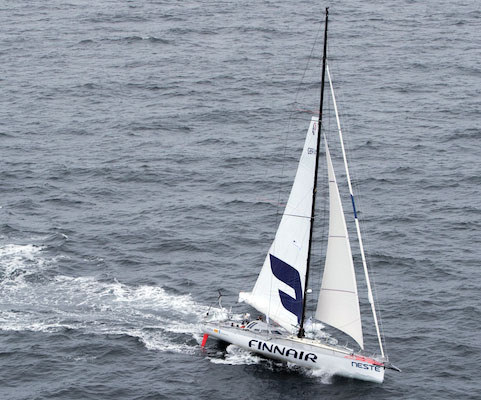
Big breeze and crashing waves have impacted the fleet over the last few days. British sailor Richard Tolkien, 61, was injured and abandoned his IMOCA 60, called 44 after the UK dialing code. Sailing 880 miles WSW of Horta, Azores, Tolkien was down below when he heard a big bang. "The fitting holding the staysail stay to the deck had ruptured. By the time I got on deck the sail was flailing around. I turned the boat downwind and spent the next two hours trying to sort out the mess. I was hit in the face and then later again by a glancing blow to the side of the face by the furling drum at the bottom of the stay. On the second occasion there was a lot of blood on the deck and I realized I needed to call for assistance." A cargo ship, the Anton Topic, was diverted and retrieved Tolkien. Like all the boats in the race, 44 has a tracker onboard. "I hope to rescue the boat," said Tolkien, after getting stitched up by the medic aboard the Anton Topic, which should arrive in Philadelphia on May 18.
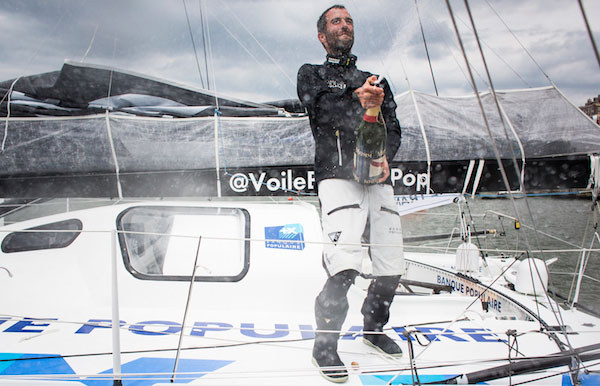
At the head of the IMOCA 60 class, Armel Le Cléac’h on the foiling Banque Populaire reached the finish line off Sandy Hook more than two hours ahead of Vincent Riou on the conventional PRB. Le Cléac’h is now looking forward to sailing the Vendée Globe on the boat, which he feels has proved herself in the harsh North Atlantic storm conditions.
